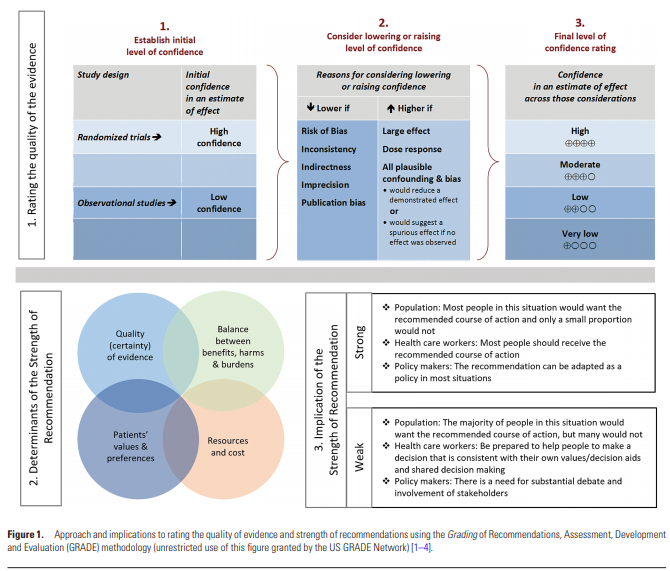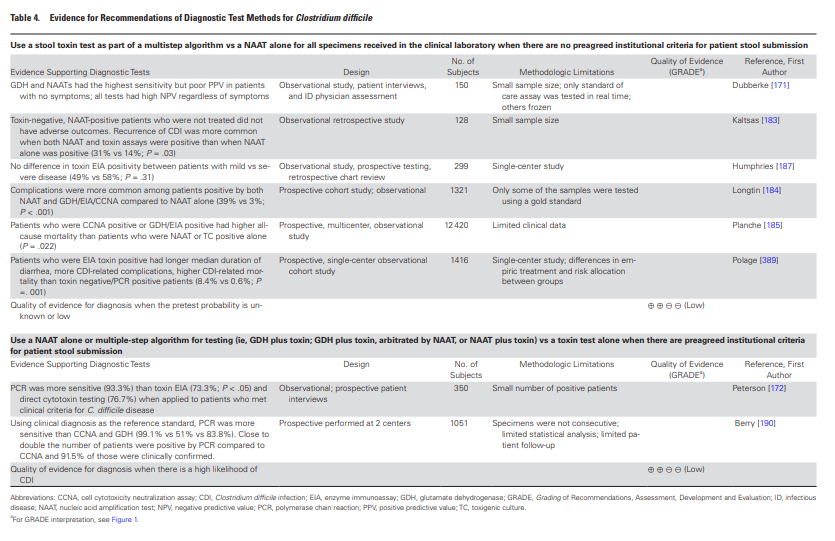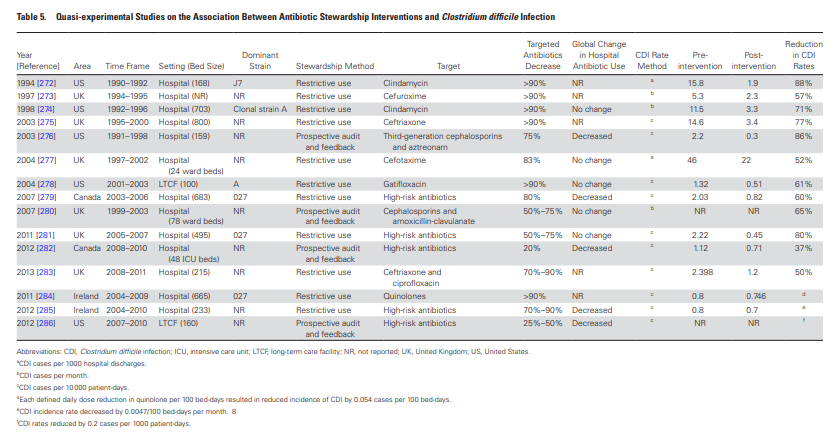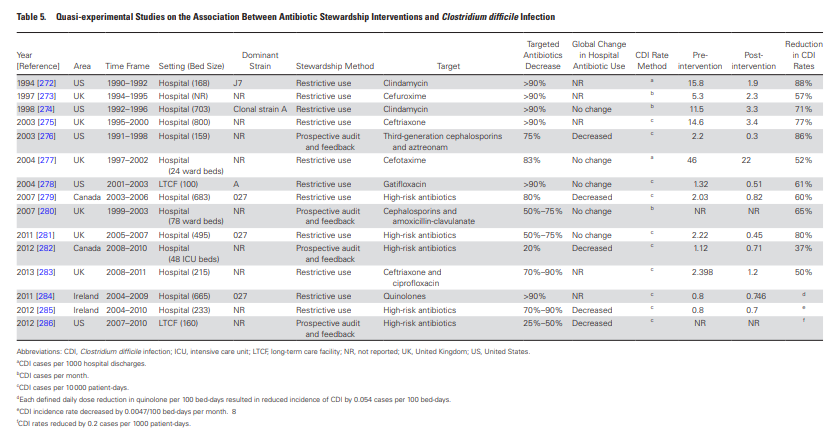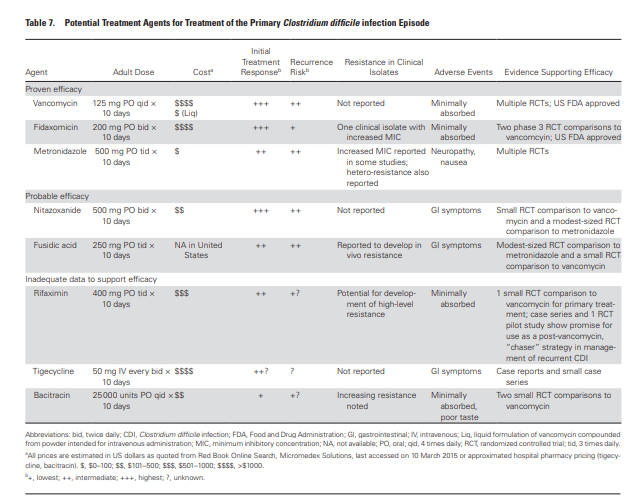The Executive Summary of Resource (1) [HTML] runs from p e1 to e8 of the PDF. Please read the executive summary first [note to myself when reviewing again].
Only after reading the executive summary should you go ahead and review the Figures and Tables I’ve included in my study notes will give you an adequate quick review [Again just a note to myself].
But the reading the full text and the Additional Resources after the post will give you the complete picture of C. Diff Infection.
The following Figures And Tables are from Resource (1) below, The 2017 IDSA C. Diff. Guidelines:
*Fulminant CDI, previously referred to as severe, complicated
CDI, may be characterized by hypotension or shock, ileus, or
megacolon. p e7 of the PDF.*The definition of severe CDI is above in the Table 1 [ I believe that elsewhere in the article it is diagnosed as CDI with SIRS without the presence of the fulminant].
Additional Resources:
(1) Clinical Practice Guidelines for Clostridium difficile Infection in Adults and Children: 2017 Update by the Infectious Diseases Society of America (IDSA) and Society for Healthcare Epidemiology of America (SHEA) [PubMed Abstract] [Full Text HTML] [Full Text PDF]. Clin Infect Dis. 2018 Mar 19;66(7):e1-e48. doi: 10.1093/cid/cix1085.
(2) Bristol Stool Chart [PDF] from Bladder And Bowel Community
Since it can be hard to state what is normal and what is abnormal, some health professionals use a scale to classify the type of stool passed. This helps assess how long the stool has spent in the bowel.
Type 1 has spent the longest time in the bowel and type 7 the least time. A normal stool should be a type 3 or 4, and depending on the normal bowel habits of the individual, should be passed once every one to three days.
(3) European Society of Clinical Microbiology and Infectious Diseases: update of the diagnostic guidance document for Clostridium difficile infection [PubMed Abstract] [Full Text HTML] [Full Text PDF]. Clin Microbiol Infect. 2016 Aug;22 Suppl 4:S63-81. doi: 10.1016/j.cmi.2016.03.010. Epub 2016 Jul 25.

